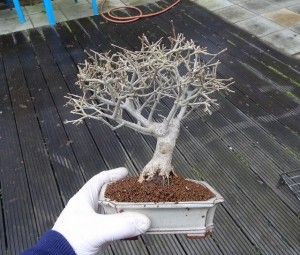 Shohin bonsai is the art of tiny bonsai tree training. We take the same trees we use for normal bonsai and make then even smaller. The term “shohin” means “tiny thing” in Japanese. These trees usually grow to be six to eight inches tall. They are perfect for those who are interested in growing bonsai but do not have much room. You can fit a dozen or more of these on a windowsill with no problem. Apartment renters are the perfect customers for shohin bonsai trees.
Shohin bonsai is the art of tiny bonsai tree training. We take the same trees we use for normal bonsai and make then even smaller. The term “shohin” means “tiny thing” in Japanese. These trees usually grow to be six to eight inches tall. They are perfect for those who are interested in growing bonsai but do not have much room. You can fit a dozen or more of these on a windowsill with no problem. Apartment renters are the perfect customers for shohin bonsai trees.
The challenge and art of shohin bonsai is creating a smaller version of a tree that looks well matured. This is difficult when the amount of soil it is growing in can fit into the palm of your hand. The bonsai trainer must have a good knowledge of how the tree is going to react to every cut. This will allow them to masterfully design a tiny tree that looks aged and mature.
As you can imagine, bonsai training takes a lot of patience to do correctly. Imagine trying to do bonsai training with a tree one fifth the size. Shohin bonsai are trained using the same procedures, just on a smaller scale. Typically, you will only have a few branches and leaves to work with. This leaves very little room for error, as you can’t just cut something off if you don’t like it. These trees are also grown in a pot even smaller than a typical bonsai pot. The pots used are sometimes smaller that a shot glass.
Being in such small pots requires even more attention than the normal bonsai trees. They need to be watered often, typically more than once a day, to ensure that the small amount of soil stays moist. They also need to be repotted more often since the tree will become rootbound very quickly. Maintenance pruning will need to be conducted weekly, or the tree will get too large very quickly. New growth needs to be pinched back so that the limbs do not become too large.
Bonsai Tree Care
Latest posts by Bonsai Tree Care (see all)
- How to Choose Bonsai Pottery for Your Tree - January 15, 2015
- How to prepare a bonsai for winter - May 21, 2014
- “Indoor Bonsai for Beginners: Selection – Care – Training” Review - May 8, 2014
Leave a Reply